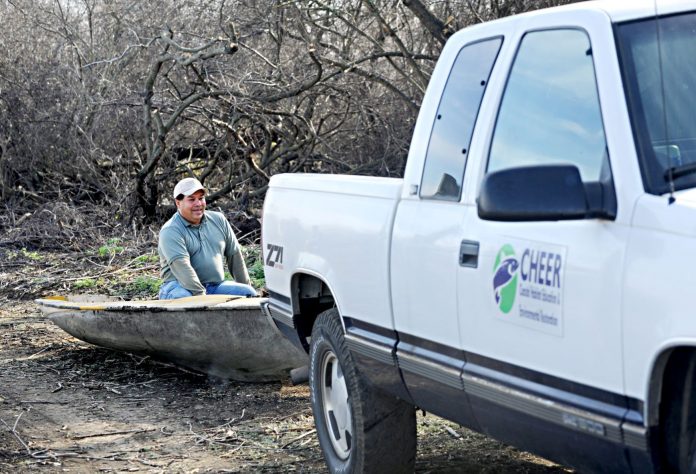
Gilroy—The drought that has plagued California and interrupted a resurgence of steelhead trout in South County waters has offered an unexpected opportunity for conservationists restoring fisheries decimated by pollution.
They met Wednesday morning to haul one more vessel from the Pajaro River and display the others—a total of five—revealed by low water levels at the site of sprawling lagoon off Highway 25 south of Gilroy.
“The silver lining in the drought was that all the boats became visible,” said Herman Garcia, founding president of CHEER—Coastal Habitat Education & Environmental Restoration.
The Gilroy-based, steelhead rescue and habitat restoration group has championed the fish and area waterways since incorporation as a nonprofit in 2003.
In addition to the boats, its most recent cleanup efforts in the Pajaro and its tributary Uvas Creek have yielded 1,030 tires, two pickup trucks, two cars and 500 cubic yards of assorted garbage.
And Garcia said a new weapon soon will be in place to discourage or catch people who illegally dump garbage, tires and cars into area waterways—surveillance cameras paid for by CHEER and set up by the California Department of Fish and Wildlife.
Signs also will be placed near waterways warning people not to dump, he said.
It’s unknown if the boats found recently were victims of sinking or were dumped.
They were pulled from the bed of a lagoon that’s as wide as football field is long and included a sailboat, a ski boat, a large outboard motorboat and two rowboats, Garcia said. The site is east of Highway 101 and south of Route 25.
“I don’t have any idea how they got there,” he said. The owners are a mystery and no one knows how long the boats were submerged, according to Garcia.
The waterways cleanup is what Garcia calls ‘reclamation work,” the first step on the road to habitat restoration—making the river, creeks and streams steelhead-friendly again.
As a boy, Garcia recalls waterways that teemed with steelhead that made the 40-mile swim up the Pajaro River from Monterey Bay to spawning pools in Uvas Creek and its ten tributaries.
Ten steelhead per person was the legal limit back then for fishing, he said.
Chinook salmon also used to run up the river, he said, but disappeared in the 1960s. And by the 1980s, steelhead numbers began a to decline until, over a two year period in the late 1980s, they vanished.
Alarmed, Garcia and others brought in scientists with critter-stunning, electro-shock equipment to perform an official count of steelhead in the waterways—they found one.
The reason, said Garcia, went unknown for years. Then, in 2007, the culprit was found to be corporate pollution, the dumping of chemicals into the river that killed the fish and made the water uninhabitable by steelhead.
What followed was a successful effort to end the pollution and bring the steelhead back. The fish returned to flourished and were at sustainable levels, Garcia said—then the drought hit, water levels dropped and again the steelhead stayed away.
For more information about CHEER, go to www.cheercentral.org.














